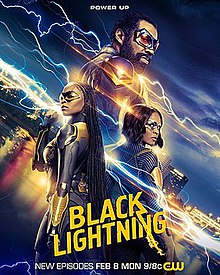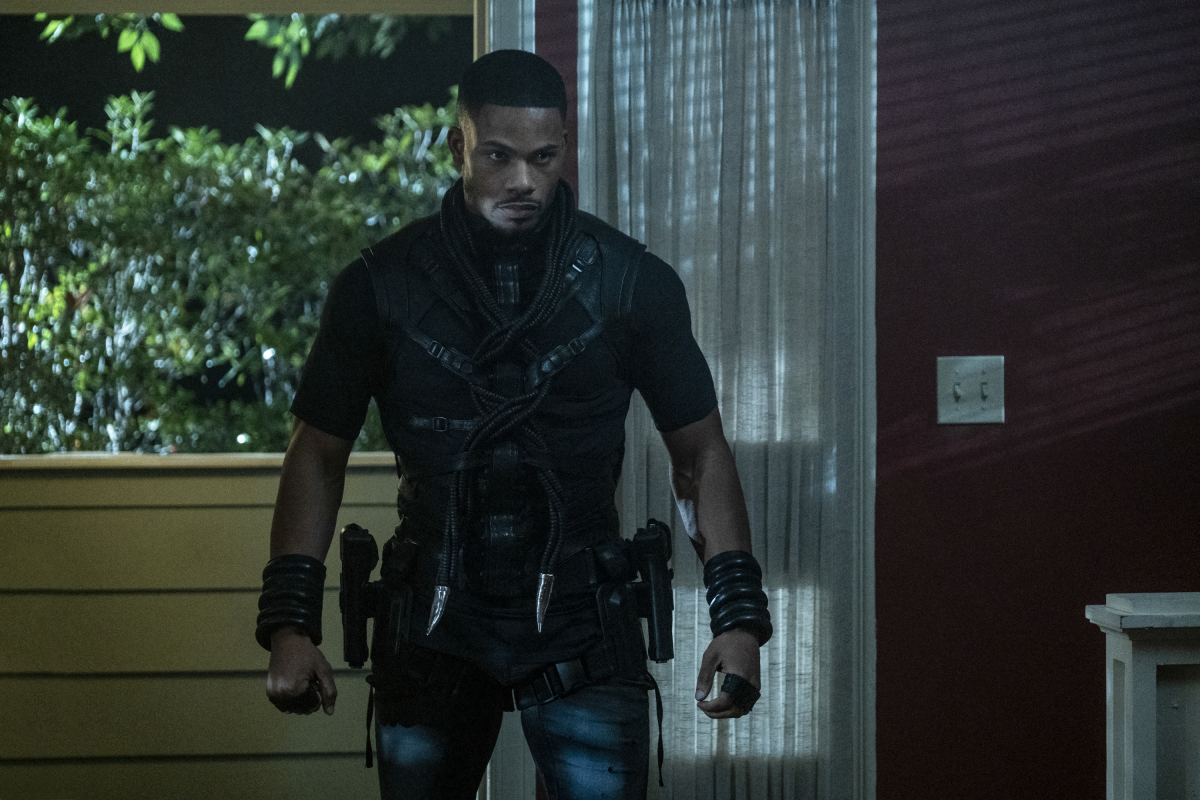Three years ago the CW added a new property to their group of live action comic-based properties. That show was Black Lighting. Much like other CW properties (Flash, Arrow, Supergirl, etc), the show was focused on a titular superhero, Jefferson Pierce, and dealt with the protagonist’s reintroduction to the world, how it affected the world, and the myriad of ways that it affected his family dynamic. It touched on issues with secret identities and battles with mob bosses, assassins, and supervillains, all while introducing thinly-veiled examples of a variety of socio-economic issues.
The difference, however, was this time this show was told from the perspective of a black man and a black family. It’s not the CW-verse show to have a black star/co-star — we had John Diggle, we had Joe and Iris West, we had (at one point) James Olsen. But the central story wasn’t told from their perspectives, nor was it told from the perspective of a man with his experiences. And while those shows may have touched on issues, Black Lighting dove into them headfirst — whether it was regular or superhuman crime it was a vehicle to explore the very real issue of race and its impact on perception, finance, education, and civil liberties. So in that regard the show was a game changer, a black story written, produced, and directed by black people, telling the black story in all the many ways that black lives and black culture was expressed; it’s something we hadn’t had the opportunity to get a real look into in this genre.
But one area that Black Lightning didn’t drift away from compared to other CW superhero properties was its attention to detail in regards to the quality of high level combat scenes.Whether a matter of martial arts or a matter of superpowers, Black Lightning upheld the creativity, intensity, and accuracy of combat in this world of assassins, metahumans, enhanced humans, soldiers, and mercenaries. And one example of that can be seen in the subject of this breakdown — Khalil Payne, AKA Painkiller, who will soon be seen in his own spinoff series.
Painkiller was introduced as a standout athlete and student in high school, and after a tragic shooting paralyzed him, he was turned into a physically enhanced soldier/assassin for both criminal enterprises and secret government cabals, before eventually becoming an antihero. The following scene illustrates the way that his fighting style reflects the storytelling around the character:
Painkiller vs. Gravedigger: Attribute-based Fighter vs. Seasoned Veteran
A story as old as time itself — a young, strong, explosive, dynamic, skillful, and brash fighter faces an older fighter, one not as dynamic as they used to be, but gritty, experienced, and skillful. Randy Couture vs. Tim Sylvia, Jens Pulver vs. BJ Penn, Michael Bisping vs. Luke Rockhold, Bernard Hopkins vs. Kelly Pavlik or Jean Pascal — the clearly superior and fresher fighter meets their match against a faded but dangerous veteran. In this matchup, the enhanced Khalil “Painkiller” Payne takes on the military-trained original metahuman, Tyson “Gravedigger” Sykes.
Painkiller shoots for a single leg on Gravedigger, getting in deep and turning the corner to secure it. Gravedigger threatens with a guillotine to get Payne to hesitate for a moment before he switches to underhooks, using them to disengage and take him off balance, as a way to create space.- As soon as he has turned Payne, Gravedigger turns into a modified macaco flip to establish distance, then quickly backpedals to extend it. Realizing that in a closed off space, he needs more room to operate if he wants to neutralize Pankiller’s advantages in speed and quickness.
- Payne instantly recognizes what Gravedigger is doing and turns into a cartwheel-backflip combo to quickly close the distance and allow him to make his speed a factor in another exchange.
- Gravedigger slides to the side, having drawn Painkiller into his trap. He fires a lead hook, which is blocked. Payne, realizing the body is an easier target to land clean on than the head, fires a straight right to the chest, stunning his opponent before swinging with a fast but telegraphed left hook.
- Instead of following up with a right hook to the body or an uppercut, Painkiller shifts his weight, loads his hits, and follows up with a same hand strike in the form of a backfist…which is met with a hard outward forearm block by Gravedigger.
Painkiller traps the arm, with his right clearing the guard, and goes back to the backfist, which is once again met with a hard outward forearm block; the sequence repeats itself again. But this time Payne switches to an outside trap followed by another backfist, which Gravedigger uses an outside parry to deflect, before attempting to use his own backfist. Payne, however, deflects the blow with an inside parry, which allows him to load his hips and return fire with a slashing left hand across Gravedigger’s face.- Gravedigger has taken Painkiller’s measure and is no longer entertained by this exchange, so he seeks to end it quickly. He turns his body, violently freezing Payne as he is trying to process what technique will be used against him. Instead of a hand/arm strike, Gravedigger instead comes under Payne’s line of sight with a devastating front kick which knocks the wind out of him while extending the distance between them.
- Painkiller overpursues, lunging with a right hand, taking himself off balance and setting himself up to be countered with an upward palm strike, which stuns him while standing him up. This leaves him vulnerable to the reverse spinning heel kick which essentially ends the fight.
This was a fight that seemed competitive because of the physical tools of Painkiller, but much like Melinda May’s fight with Quake, the seasoned vet was in complete control, as he poked and prodded to find his young opponent’s rhythm, timing, skill level, and tactical knowledge. And once he found his opponent’s limit, he commenced to ending the engagement swiftly. When facing a veteran fighter, a young talent will have moments of success which result from a combination of their confidence, their physical tools, and their own developed skill. But when that fighter can’t overwhelm an opponent and is forced to navigate distance and make adjustments in pace and/or technique, the gaps in applicable skill and strategic awareness come to the surface, and more often that not, that leads to sound defeats for the brash young fighter.
As Black Lightning progresses towards the endgame of the story’s arc and its series finale, the focus now shifts to Painkiller, who will be showcased this week. The fight sequence that we highlighted and broke down was just a taste of the physical tools and fighting style of young Khalil Payne, as he was still learning the ins and outs of combat. This loss was decisive but ultimately beneficial, as it will force him to develop conceptually, tactically, and strategically. The threats will only get more challenging from this point on, both in his upcoming “backdoor pilot” episode and his spinoff series, so hopefully Painkiller learned the right lessons with this loss, lessons which will allow him to take forward steps as a both combatant and as a hero.
 Black Lightning Season 4 returns on April 12, 2021 on the CW network.
|








